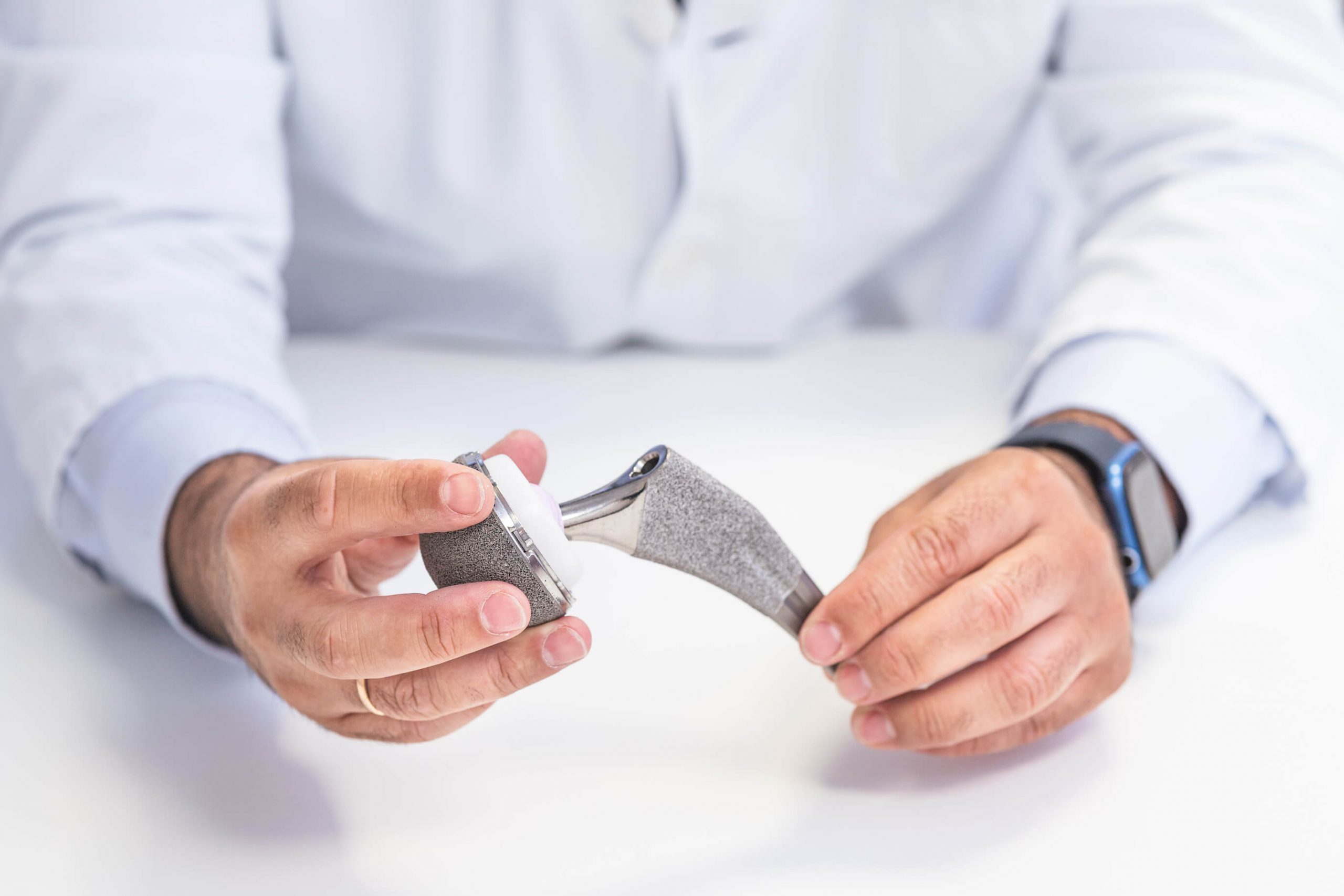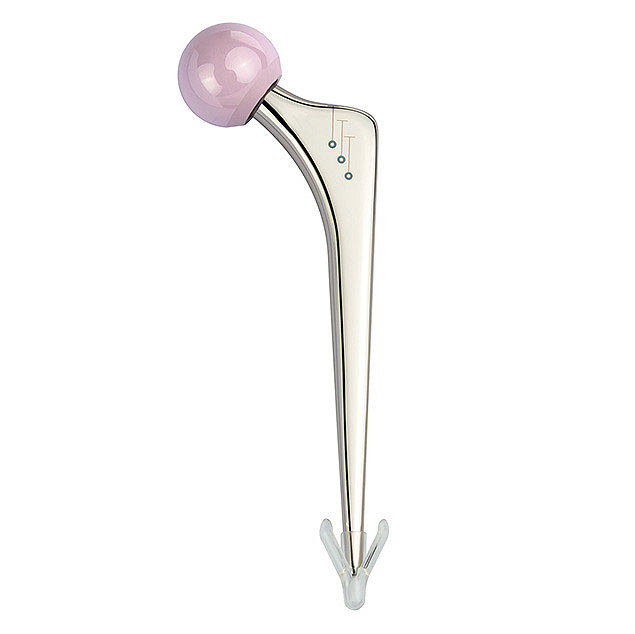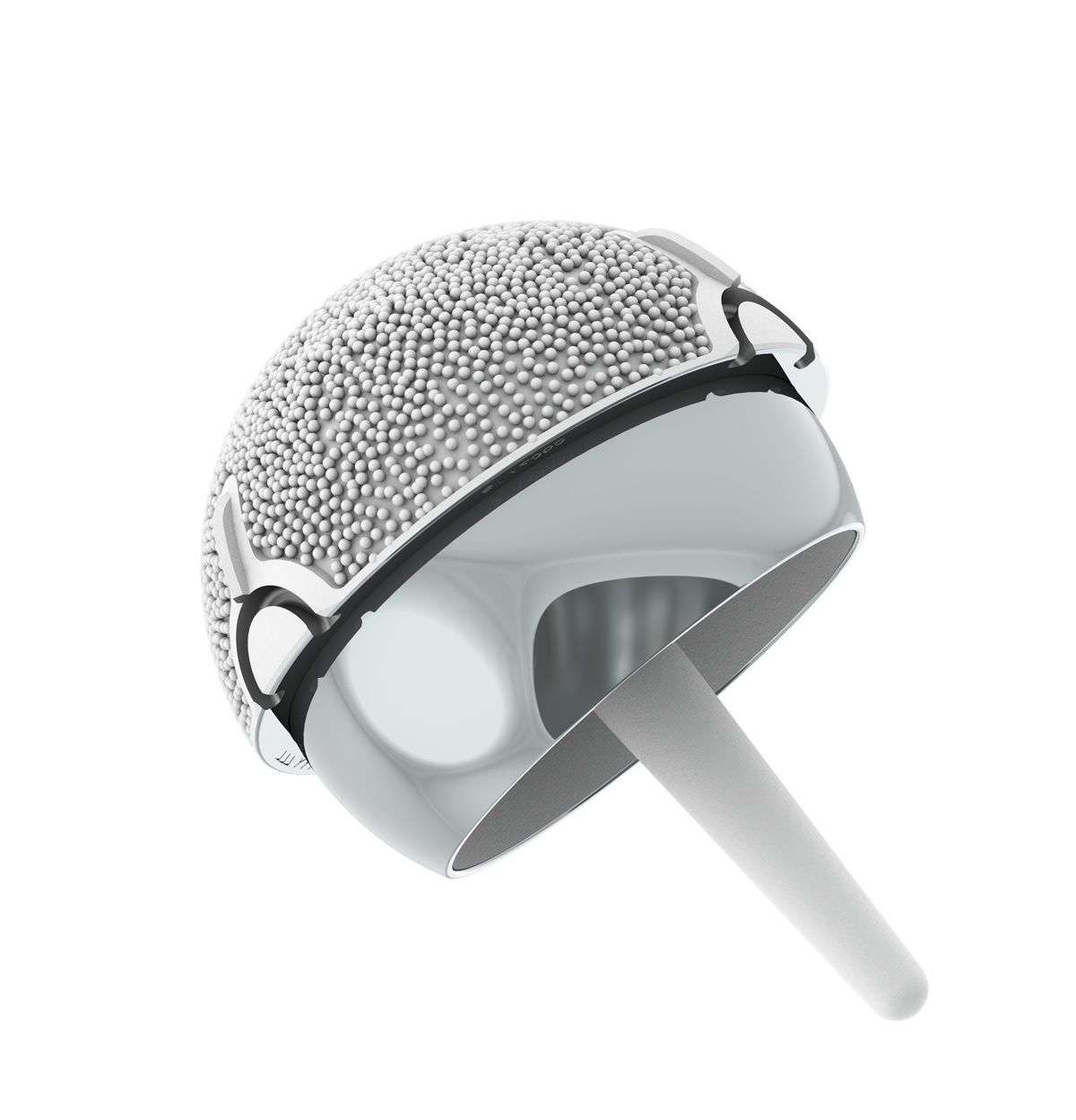

Surgery is typically a last resort, after all other treatments have been exhausted. If you and your orthopaedic consultant decide to proceed with surgery, there are several types of hip replacements available to alleviate your pain.
A hip replacement involves replacing the damaged surfaces of the hip joint with artificial components, providing smoother movement. Both the ball and socket are replaced.
The goal of hip replacement surgery is to reduce pain, improve mobility, and enhance your quality of life. After the operation, everyday activities such as walking, sitting, and driving should become more comfortable.
Post-operative precautions: During the first six weeks, you’ll need to avoid crossing your legs and bending too far at the hip to prevent dislocation.

Before surgery, you’ll receive instructions from the hospital regarding when to stop eating and drinking. Typically, you should not eat or drink after 2 a.m. on the day of your surgery.
On the day, you’ll change into a hospital gown, and the surgeon will review your consent form and mark the surgical site. The anaesthetist will discuss your options for anaesthesia and pain relief after surgery.
You’ll either receive general anaesthesia (put to sleep) or a spinal anaesthetic (numbing from the waist down). If you choose a spinal anaesthetic, sedation can also be provided so you can sleep during the procedure, which typically lasts 60-90 minutes.
The incision is typically 8-10 inches long. The damaged ball of the hip joint is replaced with an artificial ball, and the socket is resurfaced to fit a new artificial component. Various materials are used, often metal and hard plastic or ceramic, depending on your individual needs.
Once the procedure is finished, you’ll spend time in a recovery room before being moved to a ward. If you had a spinal anaesthetic, the numbness may take 4-6 hours to wear off. You will have monitors to check your vital signs and will be given appropriate pain relief, such as painkillers through a drip or a morphine pump.
Within a few hours of surgery, you will start moving. The physiotherapy team will help you walk and manage day-to-day activities. A follow-up X-ray will ensure the implants are in place, and blood tests will check your recovery.
Precautions After Surgery:
Take precautions during other surgeries: If undergoing any surgery, especially dental work, let your healthcare provider know about your hip replacement to avoid infection.
While hip replacement is a highly successful procedure, it does carry some risks, including
Anaesthetic risks: Your anaesthetist will discuss these with you in detail.
Blood clots: Deep vein thrombosis can occur in the calf and can move to the lungs (pulmonary embolism).
Infection: This is a significant concern, and strict measures are taken to prevent it. You will receive antibiotics during and after surgery.
Leg length discrepancy: In rare cases, one leg may end up slightly longer or shorter than the other.
Bleeding: You may need a blood transfusion if your blood count drops.
Dislocation: Highest risk is within the first six weeks, so following post-operative precautions is essential.
Nerve injury: Rare, but may result in numbness or sensitivity around the incision.
An Innovative Solution for Hip Pain and Improved Mobility
If you’re experiencing chronic hip pain due to arthritis or other degenerative conditions, hip resurfacing may be a viable alternative to total hip replacement. At Mr. Nasr’s practice, we offer hip resurfacing as a bone-conserving procedure designed to relieve pain, restore function, and enhance the quality of life for suitable candidates.
What Is Hip Resurfacing?
Hip resurfacing is a surgical procedure that involves reshaping and capping the femoral head (the ball of your hip joint) with a smooth metal covering. Unlike total hip replacement, which removes the entire femoral head, hip resurfacing preserves more of your natural bone structure. The damaged cartilage in the hip socket (acetabulum) is also replaced with a metal cup.
Resources: A Patient Guide to Hip Resurfacing

Benefits of Hip Resurfacing
Bone Preservation: Retains more of your natural bone, which can be particularly beneficial for younger, active individuals.
Easier Revision Surgery: Preserving the femoral head can make any future surgeries more straightforward.
Reduced Risk of Dislocation: The larger size of the resurfaced femoral head provides greater stability, decreasing the likelihood of hip dislocation.
Return to High-Impact Activities: Many patients can resume activities like running, skiing, or sports more comfortably compared to those with traditional hip replacements.
Professional tennis player Andy Murray is a notable example of an athlete who underwent hip resurfacing surgery. Facing persistent hip pain that threatened his career, Murray opted for hip resurfacing in 2019. Following surgery and rehabilitation, he made a successful return to competitive tennis, highlighting the potential of hip resurfacing to restore high levels of activity.
While individual results may vary, Andy Murray’s experience illustrates how hip resurfacing can benefit active individuals seeking to return to demanding physical activities.
Hip resurfacing is typically recommended for:
Younger Patients: Generally men under 60
Advanced Hip Arthritis: Those suffering from severe osteoarthritis or other degenerative hip diseases.
Good Bone Quality: Patients with strong, healthy bone density.
Active Lifestyle Goals: Individuals wishing to maintain or return to a high level of physical activity.
Patients with osteoporosis or poor bone quality.
Women to potential risks associated with metal ion release.
Individuals with kidney impairment or metal allergies.
At Northampton Hip and Knee Clinic, we are proud to offer day case hip replacement and day case partial knee replacement surgeries, allowing patients to return home on the same day as their procedure. Advances in surgical techniques, anaesthesia, and post-operative care have made it possible for patients to undergo these life-changing procedures with faster recovery times, reduced hospital stays, and improved overall outcomes.
A day case hip replacement is a total hip replacement procedure performed in a way that allows the patient to be discharged on the same day as their surgery, without the need for an overnight hospital stay. This option is ideal for patients who are in good general health and have support at home for their recovery.
The day case hip replacement follows the same basic steps as a traditional hip replacement but is tailored for faster recovery and discharge.
Our dedication to outstanding care is evident in the stories of our patients. Explore how our treatments have significantly improved lives, offering relief and restoring mobility for individuals just like you.
Mr Pierre Nasr, MBBS BSc Dip IMC RCS (Ed) FRCS (Tr&Orth), is a Consultant Trauma and Orthopaedic Surgeon with extensive experience in hip and knee replacements and fracture management. His expertise ensures you receive the highest standard of care at Northampton Hip and Knee Clinic.
Remote Consultations for Hip and Knee Pain and Lower Limb Trauma
Experiencing hip or knee pain or a recent lower limb injury? You no longer need to wait for in-person appointments to receive expert advice and care. At Northampton Hip and Knee Clinic, we offer remote consultations that allow you to discuss your condition with our specialist team from the comfort of your own home.
For more information about fracture treatment or to schedule a consultation with Mr Nasr, please contact us:
© 2024 Northampton Hip and Knee Clinic. All rights reserved. Registered Number: 10536384
Website Design & Marketing by Loop Digital.